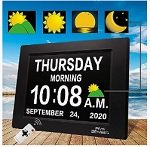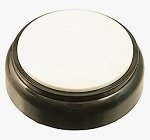There are several ways to adapt or create a dementia-friendly home so that the person who has the illness can remain safe and independent in the comfort of the home for the longest possible time.
Before making any modifications, it is important to first assess the home while considering the needs of the person with dementia.
This will help you create a space that will help the individual thrive.
Contents
How to Make Your Home Dementia-Friendly
Here are some tips you can work with if you intend to create a comfortable space for an individual with dementia.
Work on the Lighting

Good lighting is important for any person who has a neurodegenerative disease. It helps them see clearly and can help to reduce the risks of falls and confusion.
Where possible, ensure that there is enough natural light getting into the house during the day. Get rid of things that block the light from passing through windows.
Light switches need to accessible and easy to use. You can even install automatic light sensors so that when a person passes the sensor, the lights will automatically come on.
At night, the area where the person sleeps should also have enough darkness to help them sleep.
Changing Color Schemes
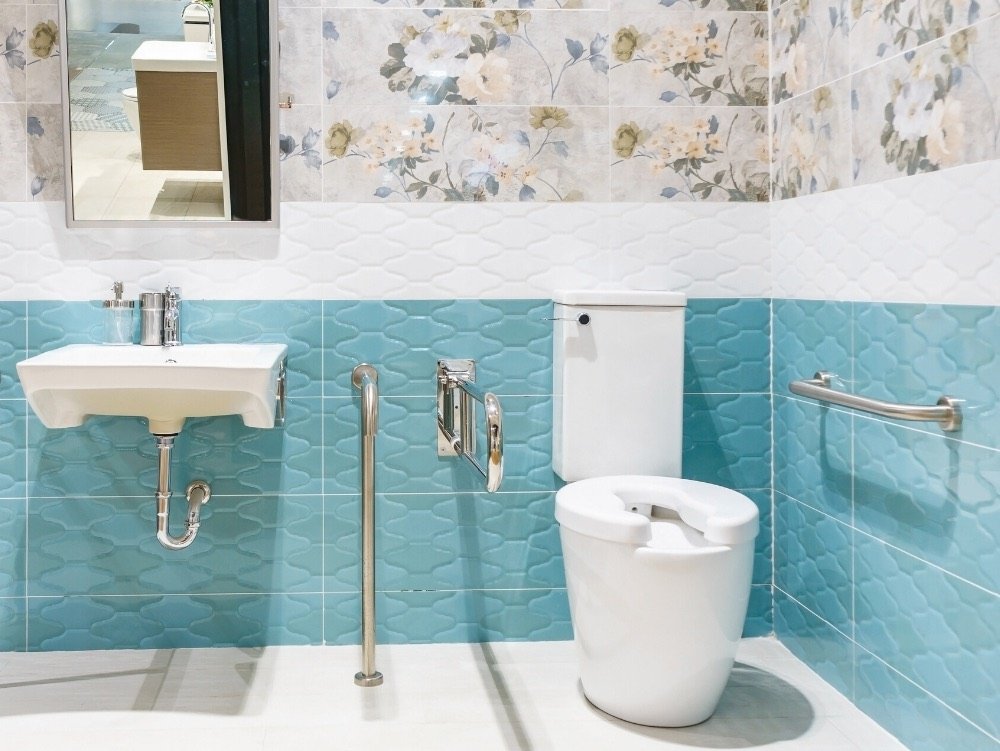
Making the rooms brighter is one of the changes you can make to create a dementia-friendly home.
It is especially important as dementia progresses because ill persons find it more challenging to interpret what they see.
Strong contrasts are essential so that some things can stand out.
Some of the changes you can make include:
-
- Contrasting colors for banisters and doors
- Toilet seat should have a bold color that separates it from the rest of the room
- Furnishings and furniture should be bright and contrast with the floors and walls
- Use crockery that is in contrasting colors to the table or placement mat to help define the edges of dishes and plates
As you use contrasting colors, be sure to avoid many patterns because these can make things harder to see enhancing confusion.
For some people, clashing patterns can lead to too much visual stimulation which results in agitation.
Ensure Flooring is Safe
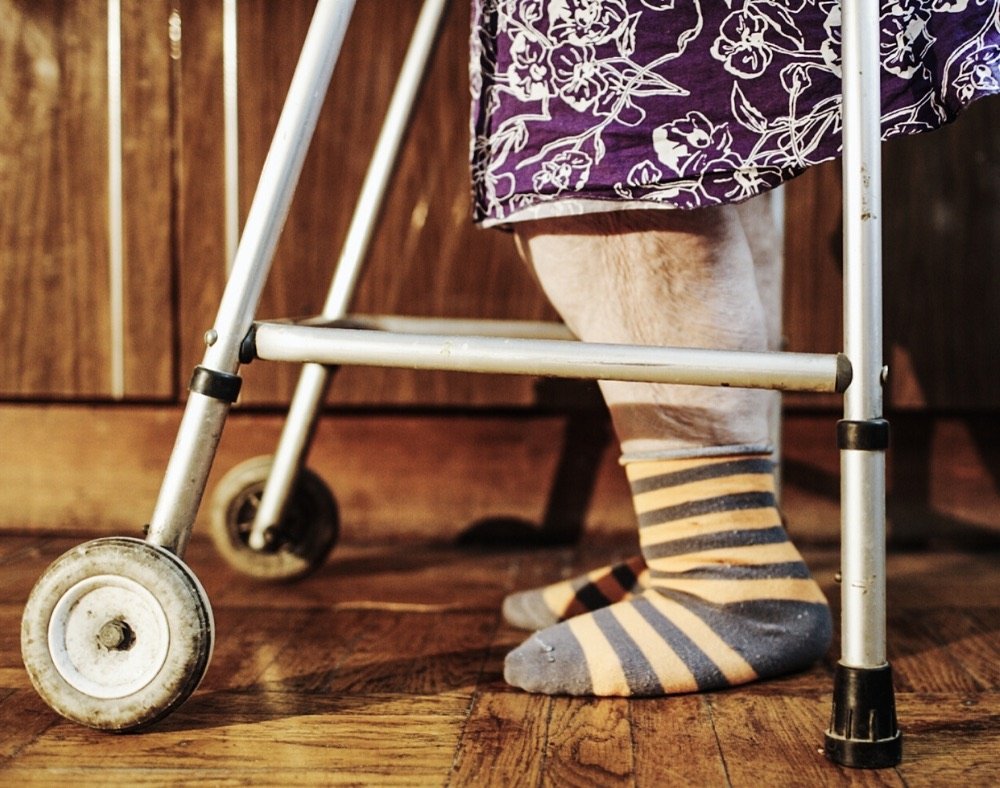
Get rid of anything that can make the person with dementia trip, such as mats or rugs. Trip hazards like cables should also be kept out of sight.
You can install plain matt flooring to make certain that the person with dementia can clearly see the flooring.
It is also best to avoid floors that are too shiny or reflective because someone may perceive these as wet making it challenging for a person with dementia to walk over.
The floors should also not have similar colors to the walls because this might end up intensifying confusion.
Avoid using blue or green on the floor because someone might mistake these for real things such as water or grass respectively.
Getting Rid Of Excessive Noise

Reducing unnecessary noise is a great step towards making a dementia-friendly home. Curtains, carpets, and cushions can help to absorb background noise.
You can turn off the radio or TV when no one is listening or watching.
It also helps to get rid of vinyl or laminate floors especially in the case where the person with dementia is using a hearing aid.
Simply walking across these floors makes the sounds stronger what can make the person uncomfortable.
Invest in Signs and Labels

These are essential when you want to create a dementia-friendly home because they can help the person with the illness get around with ease.
Place the signs and labels on doors and cupboards.
For instance, you can put up a toilet or bathroom sign on their respective doors. Only use signs and labels that are clear and have appropriate pictures and text.
You should also place these in a slightly lower position because seniors often look downwards. Placing photos on cupboards explaining the contents might also be helpful.
For example, you can place a photo of a plate in a cupboard that stores plates. Then again, you can always use see-through cupboard doors so that the person with the illness can easily see what is inside.
Get Rid of Clutter

A cluttered home is a recipe for disaster when dealing with a person who has dementia.
Get rid of any type of clutter so that the person can move around with ease.
While doing this, you should also make sure that you place the items that the person with dementia uses at places where they can easily see.
This will help seniors get the stuff they need easily.
Remove or Cover-Up Mirrors
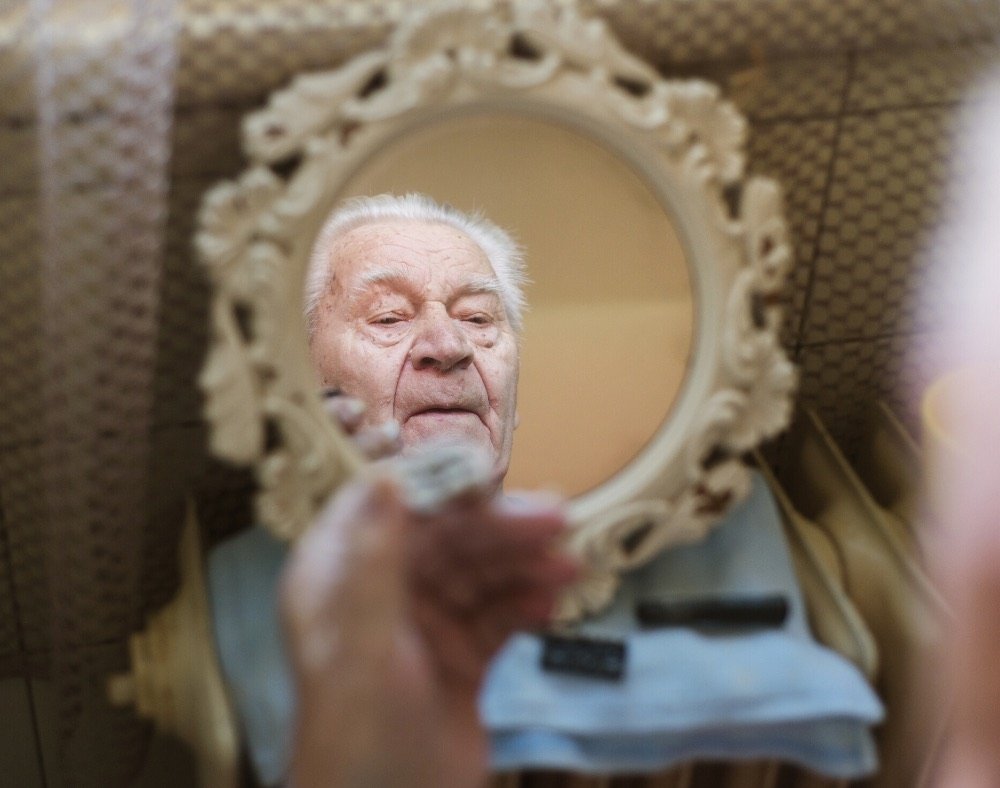
At some point, it can be distressing when a person with dementia looks up and they cannot identify themselves. This is why you should remove or cover up mirrors that can cause confusion.
It also helps to close the curtains early when the evening is approaching so that the elderly persons do not catch their reflections in the window glasses
Take Advantage of Tech Solutions

Advancements in technology have made it a lot easier to create a dementia-friendly home.
You can find solutions that are helpful in addressing needs like social interactions, wayfinding, health management, and memory support.
Examples of these include unique plus that can prevent flooding, sensors that detect when someone wanders or falls, to assistive technology that can offer reminders for taking medicine.
You can also use products that have been designed specifically for persons with dementia.
These can include stuff like telephones that have big buttons and clocks with huge LCD displays that also show the date and day clearly.
There are multiple tech solutions, even social robots, you can work with.
All you have to do is identify the ones you can afford and will deliver the much-needed assistance.
Suggested Products to Assist with Having a Dementia-friendly Home
Closing Thoughts
Creating a dementia-friendly home can have a huge impact on the person with the disease.
It helps them live more comfortably and safely with in-house care delaying the need to move into an assisted living facility when they do not want to.



